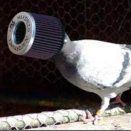Flushing Coolant From Block
Announcements
-
Similar Content
-
Latest Posts
-
I'd suggest the answer to the first question is at least a qualified "yes". I'll come back to that. Pineapples just don't do a lot to solidify the mounting of the subframe. They do a little bit, and that little bit was clearly helpful to me in the past, but the main thing they are intended to be used for is to tip the orientation of the subframe to try to either dial in more or less anti-squat. You can install them one way to try to increase launch traction, or the other way to try to increase lateral grip (at the notional expense of longitudinal traction). Or, as I did, you install them neutral, which only really offers a little bit of "snugging" up of the subframe. When I did pineapples, that was the only option. No-one had a machined alloy collar like the GKTech ones. There were some other options, but nothing like the slip in collars. And it is clear from looking at them that they occupy almost all the free space inside the rubber bush, so they will do a lot to stop them moving internally. So I thought, "that's the game for me!". Obviously the next/adjacent step is poly bushes, but what's the point in doing that with all the work and hassle required to change them over, when jamming (and I mean literally jamming) some alloy into the rubber bushes probably gives an equivalent, or possibly even superior result? So, to go back to your 1st question, I would suggest, for the investment of <<$100 and a morning spent lying under the car swearing and getting some sore fingers, it is certainly something you should try. Who knows? Maybe your situation is so severe that it doesn't solve it. But it might help a lot. If your problem is as severe as you say it is, the next thing to look at is what the rest of the bushes in the rear end a made from. Things like the Hardrace arms with hardened rubber bushes might be a good thing (for the purposes of having adjustability AND stiffer bushes). Otherwise, just poly bushes throughout could be a help. Or following in my fever dream footsteps and putting a lot of sphericals into the rear? Eliminate undersired movement to avoid the build up of resonances that cause the tramp. Also, if you have adjustable uppers in the rear, and you haven't put effort into adjusting the traction arms to minimise bump steer, there might be some advantage in that. If you don't want to go to the effort of doing it yourself (like I am pretty much forced to in Adelaide, owing to a lack of race alignment specialists) then surely there's a place in Melbs that is able to do it. It will cost $$, But that's life.
-
As someone who has pineapples, and horrible axle tramp... should I change these to collars? Is that what you're saying here? Why did you choose these instead of getting pineapples where you said you had good experiences of? I'd love to even attempt to get rid of axle tramp, I either get complete bogginess or absolute insane wheelspin, anything even remotely in between results in filling-removal axle tramp, to the point where launching the car is just not something I do.
-
Lucky for that, because putting ethanol in fuel only lowers the bulk cost of fuel if it's in 91 Add it to 98, 85% of it even and it quintuples in price. Strange physics. f**k you United, Gouging c***ts.
-
Not noticeably. Arguably, the catless turbo is going to work harder in a different direction, as it will spool up faster, go to higher speeds more easily. Only if it was tuned in the original condition. If it was a stock tune, using the AFM before and after the cat/dump change, then no, no retune needed. If the car is running on a MAP sensor, then it might well benefit from a retune. It might even run a little dangerously without a retune, but it could quite easily be fine.
-
By Dose Pipe Sutututu · Posted
We had this blend that uses 98RON + 10% Ethanol which brought it to 100RON. It's no longer available anymore unfortunately.
-



Recommended Posts
Create an account or sign in to comment
You need to be a member in order to leave a comment
Create an account
Sign up for a new account in our community. It's easy!
Register a new accountSign in
Already have an account? Sign in here.
Sign In Now